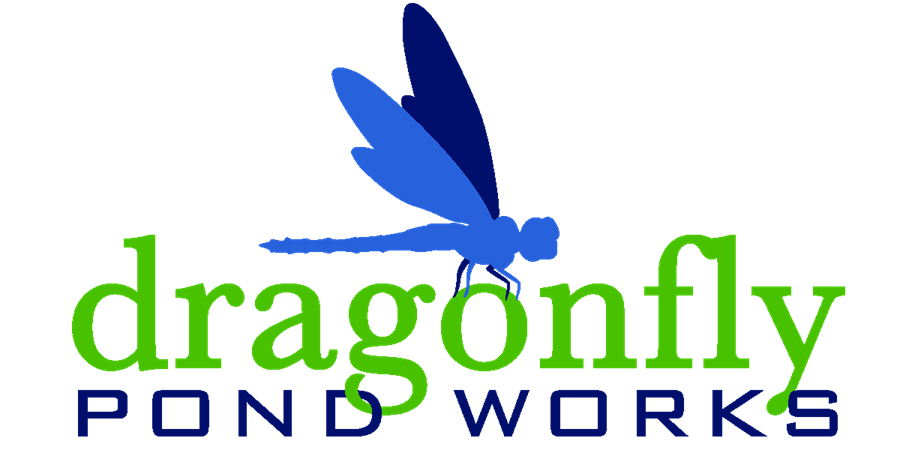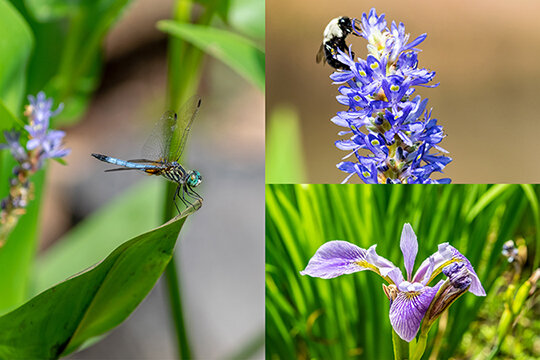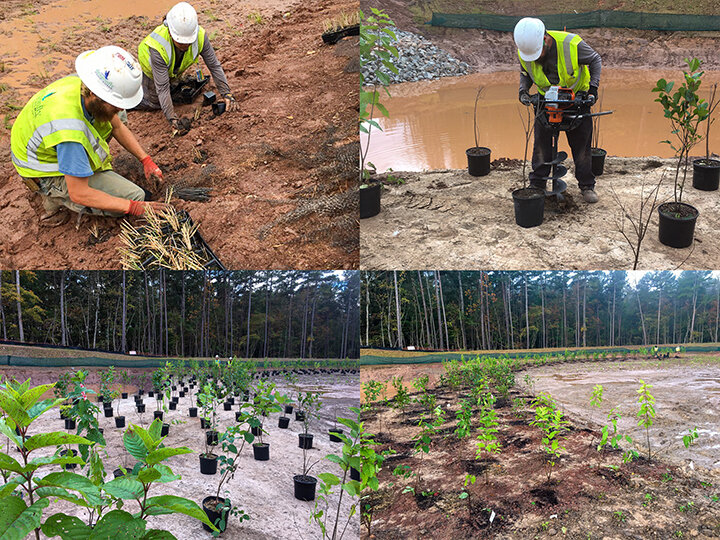Aquatic Plant Q&A with Stormwater Expert
Has your pond failed inspection due to a lack of aquatic plants?
If you have ever had to install aquatic plants in your stormwater pond or wetland, you know it is a costly and sometimes complex process. This article seeks to demystify the role of plants and the stormwater planting requirements, and provide some helpful tips on successful planting. Dragonfly Pond Works is here to help with all of your stormwater planting needs.
Why Are Plants Required?
Aquatic plants are a key design element in wet detention basins and stormwater wetlands to help with settling and removal of solids and pollutants.
Key Benefits:
Improve water quality by slowing flow and settling solids
Transform or immobilize pollutants
Provide attachment area for microbes that help convert nitrate to nitrogen gas
Help stabilize the shoreline and protect against erosion
Provide habitat for beneficial insects, such as the dragonfly, an important biological control measure for mosquitoes
For these reasons, maintaining a healthy and thriving wetland plant community ensures you will have a properly functioning and compliant stormwater system.
In wet detention basins, plants are generally included along the aquatic shelf to create a vegetative buffer, such as the well maintained buffers above.
How Do I Know If I Need Plants?
In most municipalities, lack of wetland plants can trigger a Notice of Violation as part of the Annual Certification process and re-planting is often required. Aquatic plants are costly to install, and should only be installed by an experienced professional, as timing and location of plantings are key factors affecting survival. Specialized stormwater contractors will help you understand your system and its requirements.
While plants primarily serve as a functional design element, when properly managed, most beneficial wetland plants can also improve the aesthetics of your pond or wetland by providing color and flowering throughout most of the growing season.
Pickerel Weed (left and top right) and Blue Flag Iris are two flowering aquatic plants that may be recommended for your system.
When Should Plants Be Installed?
One of the reasons we are sharing this information is because the spring planting window is fast approaching. Supplies and availability are often limited as we enter the peak planting season, so now is the time to start planning. In North Carolina, the optimal planting window runs from April through September. Plants installed in shallow water areas can be installed through the warmer summer months. Most plant suppliers recommend installing wetland plants no later than early October.
Dragonfly installed 11,000 aquatic plants in this stormwater wetland. This included 9 different varieties designed for the different elevations and water depths throughout the wetland.
What Can I Do to Maximize Survival and Establishment?
The most important thing you can do is work with a specialized stormwater vendor to eliminate mistakes and costly “do-overs”. Ponds are different from typical landscaping applications and should be treated accordingly. Most of the time there are no irrigation systems, and there are many uncontrolled factors that can affect survival. An experienced vendor will be trained on how to best install plants to maximize successful establishment. The key factors to consider are:
Water level management
Soil preparation
Proper installation methods including location of installation
Protection against damage from wildlife such as geese and ducks
Recommending suitable substitutions where applicable
It is important to maintain your stormwater device after planting to ensure plant establishment and long-term effectiveness. Invasive plants can quickly overtake healthy plants and compromise system functionality. Landscaping crews may unknowingly eliminate beneficial plants in treating invasive plants or allow invasive plants to outcompete the native plants. Dragonfly’s specialized maintenance crews apply our knowledge and training to treat invasive or nuisance vegetation while helping healthy plants flourish.
Top: Temporary goose exclusion fence protects plants from damage by wildlife.
Bottom: We installed plants in this 6-acre stormwater wetland in 2015. Our continued specialized maintenance has made this flourishing wetland a property focal point.
Aquatic Plant Management for All of Your Needs
Team Dragonfly will work with you to create a customized planting strategy to maximize your system. Our specialized stormwater maintenance crews will then protect your investment by helping the beneficial plants thrive and safely controlling invasive vegetation. All of our installation and maintenance services are documented for your records, and we provide detailed reports with photos after every Dragonfly service. Don’t miss out on this planting season. Contact us today to start your customized plan.
Learn More
Is your shoreline a liability? Learn about the risks of shoreline erosion and an innovative solution involving coir logs and stabilizing native plants.
Subscribe to our newsletter to receive informative and engaging news delivered right to your inbox.
Find us on Facebook, Twitter, Instagram, and LinkedIn for news, events, and more!
Dragonfly Pond Works provides aquatic planting and plant maintenance, shoreline erosion repair, pond management, stormwater management, and more in Raleigh, Durham, Charlotte, Wilmington, North Carolina, Myrtle Beach, Charleston, Columbia, South Carolina, Tampa, Sarasota, Naples, St. Petersburg, Fort Myers, Florida, and Atlanta, Athens, and Savannah, Georgia.






